17 Itanhaem, the Rock of Laughing Cries
The Itanhaem river marks the South end of Praia Grande. The mouth of the river parallels the hill.
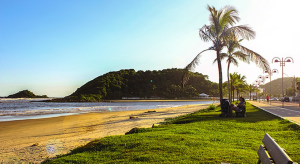 The village of Itanhaem was founded April, 21, 1532. Itanhaem is the Pedra que Chora de tanto Rir, the Rock that cries by laughing so much.
The village of Itanhaem was founded April, 21, 1532. Itanhaem is the Pedra que Chora de tanto Rir, the Rock that cries by laughing so much.
Praia Grande has many beach tents, quiosques, for food, drinks, music and dancing. Do it all with the view of the beach and the chance to swim in the ocean to cool off.
Look at distinct views near Quiosque do Praião, Tent of the Long Beach, on the sand, North of the River.
 Should we sail up the river with the local fishermen?
Should we sail up the river with the local fishermen?
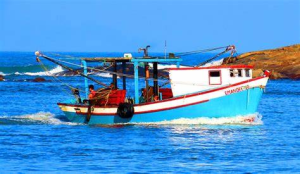 Or should we be tourists going up the river in the tour boat?
Or should we be tourists going up the river in the tour boat?
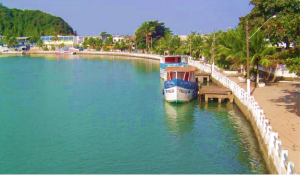 Of course, a touristic river could not be a channel to Bengal Bay…
Of course, a touristic river could not be a channel to Bengal Bay…
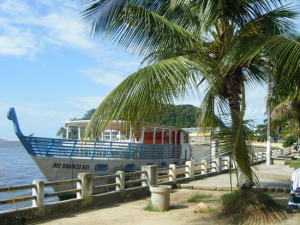 Or should we get a canoe? Can we go through the small affluents of the river? To catch crabs in the swamp?
Or should we get a canoe? Can we go through the small affluents of the river? To catch crabs in the swamp?
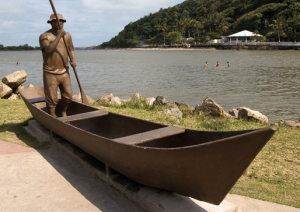 This fishing canoe is a sculpture by the river. Youngsters grew up playing with a real canoe going up the river and the river branches. Currents back and forth. Low tide: river water into the ocean. High tide: ocean invading the river.
This fishing canoe is a sculpture by the river. Youngsters grew up playing with a real canoe going up the river and the river branches. Currents back and forth. Low tide: river water into the ocean. High tide: ocean invading the river.
Little river affluents form a crab town by the swanps.
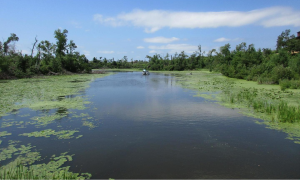
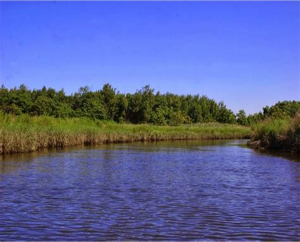
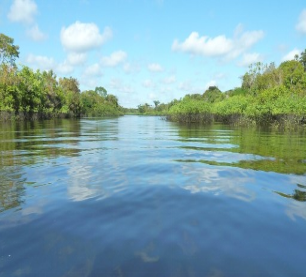
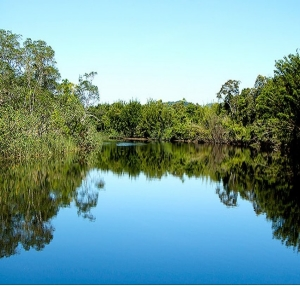 The first beach on the South side of the river is another Prainha, Little Beach, also called Praia dos Pescadores, the Fishermen’s Beach.
The first beach on the South side of the river is another Prainha, Little Beach, also called Praia dos Pescadores, the Fishermen’s Beach.
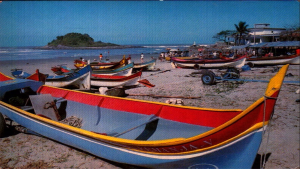 I wonder why…Let’s go fishing. Canoes on the ocean during fishing hours. Canoes on the beach during hard sun.
I wonder why…Let’s go fishing. Canoes on the ocean during fishing hours. Canoes on the beach during hard sun.
 A detailed view of the little island, accessible at low tides.
A detailed view of the little island, accessible at low tides. 
A classical picture of Prainha in old times (the author is rechecking the historical source).
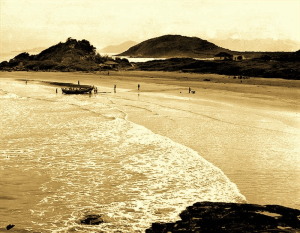 The historical Anchieta’s bed is pictured next. José de Anchieta, a Jesuit priest, lived in Brazil from 1553 to 1597. He converted millions of natives and Europeans to Christianity. Anchieta relaxed in his rocky bed, listening to ocean waves.
The historical Anchieta’s bed is pictured next. José de Anchieta, a Jesuit priest, lived in Brazil from 1553 to 1597. He converted millions of natives and Europeans to Christianity. Anchieta relaxed in his rocky bed, listening to ocean waves.
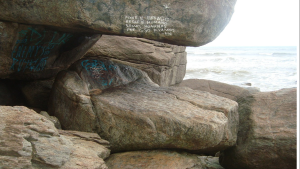 The way to go to Anchieta’s bed was walking over the rocks that were facing the ocean. Dangerous during high tides (check picture authorship).
The way to go to Anchieta’s bed was walking over the rocks that were facing the ocean. Dangerous during high tides (check picture authorship). 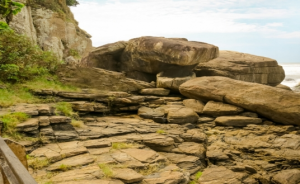 Tourists nowadays have an easy access to Anchieta’s bed.
Tourists nowadays have an easy access to Anchieta’s bed. 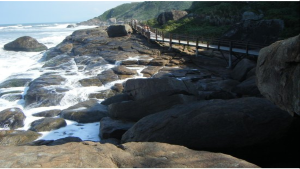
It is time to visit historical downtown Itanhaem. 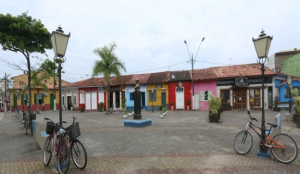 A monastery was built on top of a hill in historical downtown Itanhaem. The monastery was a refuge for Natives and Portuguese-Brazilian immigrants-the new natives, if unknown “armies” were seen approaching the region.
A monastery was built on top of a hill in historical downtown Itanhaem. The monastery was a refuge for Natives and Portuguese-Brazilian immigrants-the new natives, if unknown “armies” were seen approaching the region.  The 17th century church, the cathedral attraction of the main square, was reformed a few times.
The 17th century church, the cathedral attraction of the main square, was reformed a few times. 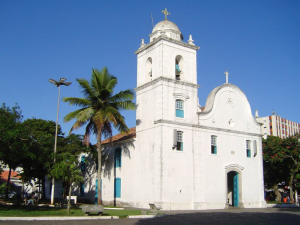 Once upon a time, the large white building was both the house of representatives and the village prison…It has been an information office, a tourism bureau in recent times.
Once upon a time, the large white building was both the house of representatives and the village prison…It has been an information office, a tourism bureau in recent times. 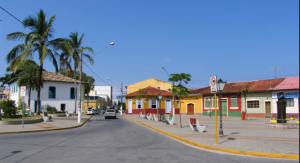 Southern Itanhaem includes the Northern part of the Peruibe Beach, praia do Rio dos Tubaroes, the beach of the River of Sharks per native language. The center of the Peruibe village and the river mouth are about 20 miles South of Itanhaem.
Southern Itanhaem includes the Northern part of the Peruibe Beach, praia do Rio dos Tubaroes, the beach of the River of Sharks per native language. The center of the Peruibe village and the river mouth are about 20 miles South of Itanhaem.
Children may swim safely in the natural pool near the hill. 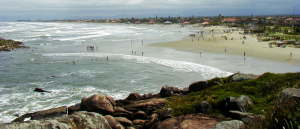
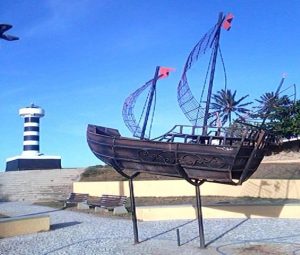 The caravel has to continue sailing to the South in search of a passage to Bengal Bay. One wonders if the sailors were already convinsed they were in a new continent.
The caravel has to continue sailing to the South in search of a passage to Bengal Bay. One wonders if the sailors were already convinsed they were in a new continent.
